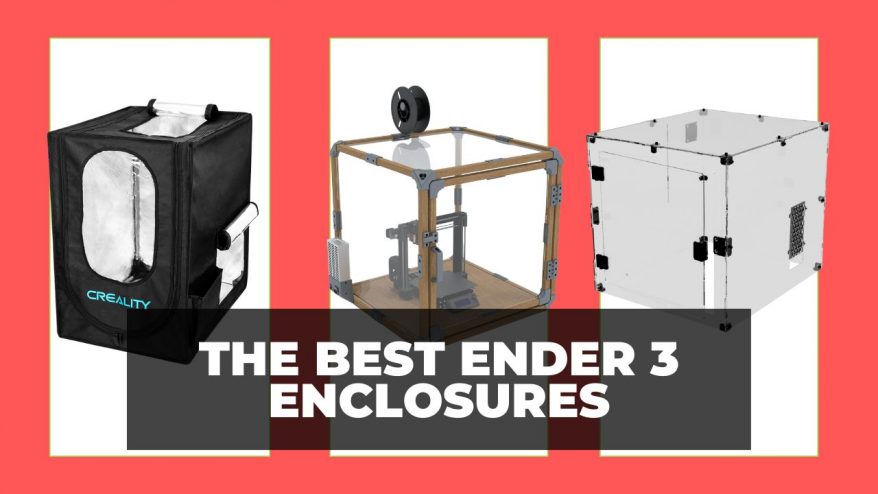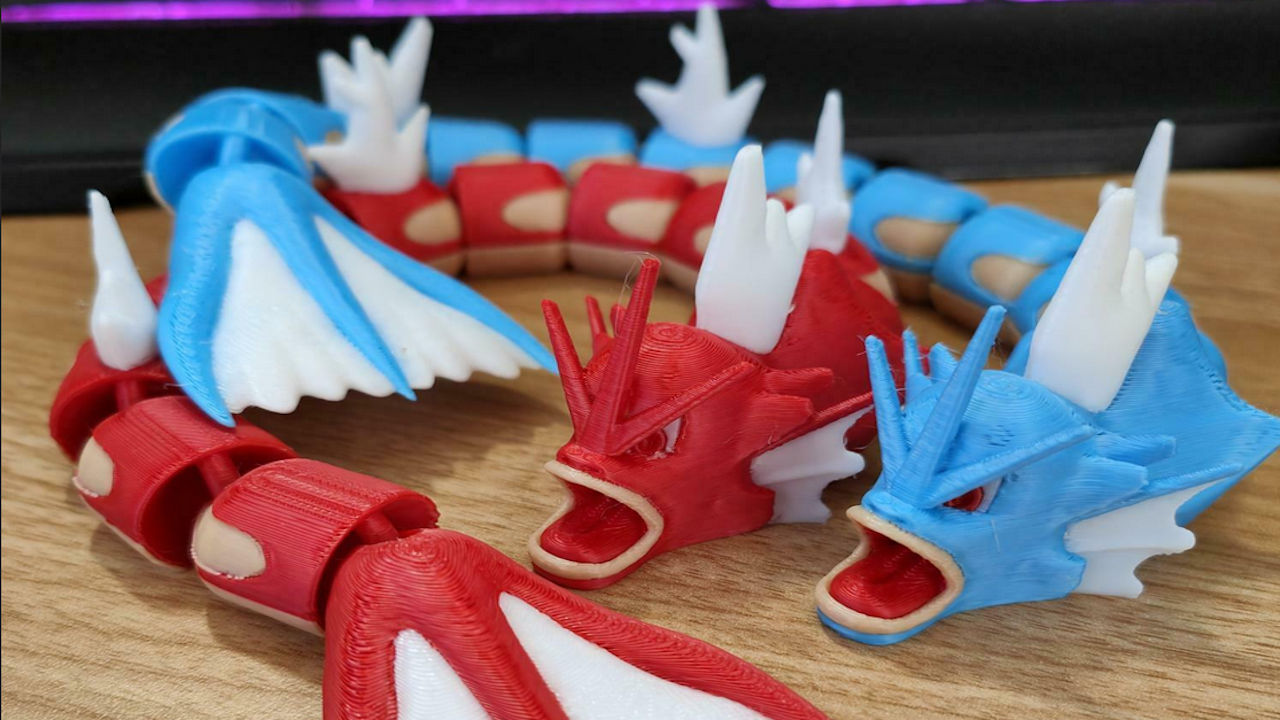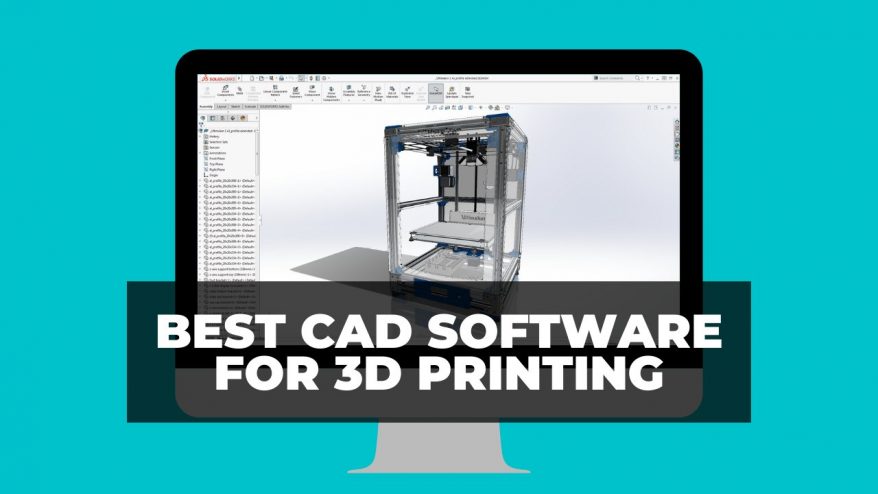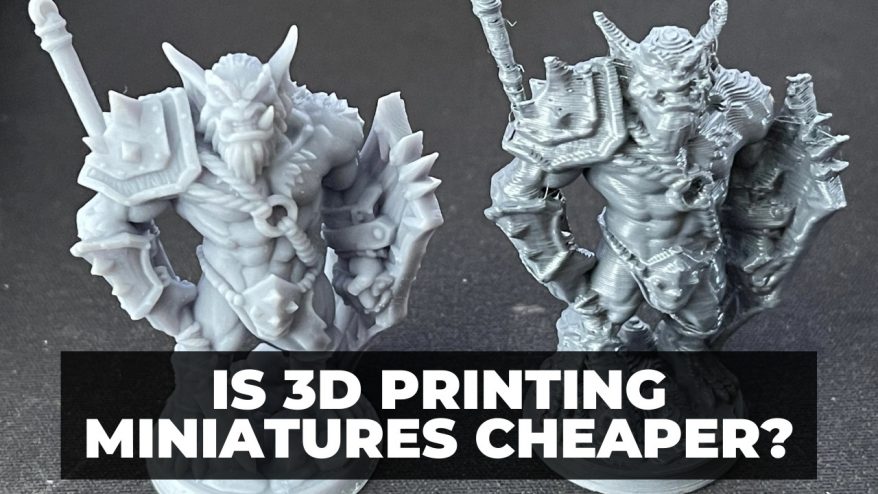
Is 3D Printing Miniatures Cheaper? (We Calculated It)


At 3DSourced we’ve covered everything 3D printing and 3D since 2017. Our team has interviewed the most innovative 3D printing experts, tested and reviewed more than 20 of the most popular 3D printers and 3D scanners to give our honest recommendations, and written more than 500 3D printing guides over the last 5 years.
Nowadays even $200 3D printers produce quality miniatures, an intriguing proposition for tabletop gamers and D&D fans wanting to expand their collection from the comfort of their own homes.
But does 3D printing miniatures work out cheaper than buying them from your favorite online or brick and mortar outlet?
In this article, we’ll be diving into the cost of producing miniatures with a 3D printer, factoring in the price of the printer, filament or resin, and electricity to determine an average cost per model.
Our findings present exact figures and cost comparisons – for those wondering whether it’s worth buying a 3D printing, FDM or resin, to print miniatures.
And if you’re looking to buy a 3D printer to print minis, we have evaluated all of the top picks thoroughly in our guide to buying a 3D printer for D&D/Warhammer miniatures and terrain.
Is It Cheaper To 3D Print Miniatures?
Yes, 3D printing miniatures is cheaper per model than buying miniatures. An officially-licenced, unpainted and unassembled Warhammer, D&D, or other popular franchise mini will cost $10 to $15, while printing an equivalent miniature with a 3D printer can cost as little as $0.20.
You can buy off-brand bulk packs of miniatures for as low as $40 for around 70 pieces, which works out to around $0.60 per mini, but printing them yourself still comes out cheaper.
These bulk packs also tend to contain low quality models with fewer details, and use cheaper manufacturing techniques than if you were to 3D print them yourself at home.
How Much Does it Cost To 3D Print a Miniature?
The average cost to 3D print a miniature is around $0.20 with FDM, and around $0.27 with resin. This includes the cost of resin or filament, electricity, and a small extra added to account for any failed prints.
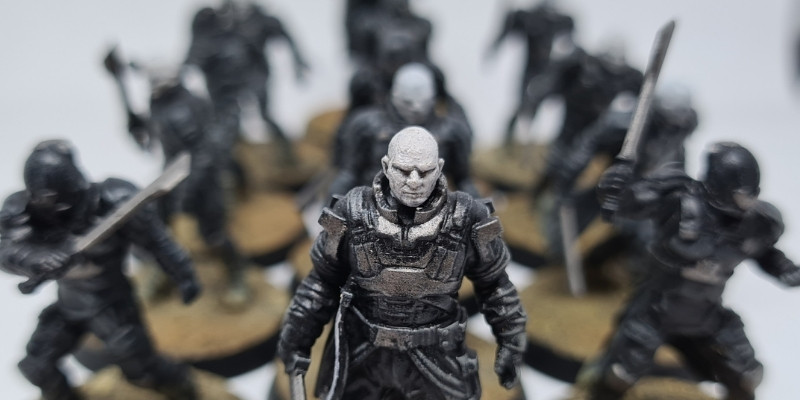
Several factors can affect the cost of 3D printing minis – the size of the mini, the cost of filament, the cost of electricity, and wasted filament from inevitable failed prints.
To get a sense of the cost of printing miniatures, we’ll base everything around printing an average-sized 28 mm mini, using mid-range filament or resin, and using typical kWH electricity costs. But, it’s worth remembering that the wattage of individual printers can vary greatly as can the cost of filament, so take this as a broad generalization that won’t apply everywhere.
Here’s how the cost to 3D print a miniature breaks down first for an FDM printer and second for a resin printer:
FDM miniature cost:
| Materials/Energy | Cost for Average 28 mm Miniature |
|---|---|
| Electricity – $0.15 per kWH | $0.01 (30 minute print with 0.15 kWh consumption) |
| Filament – PLA | $0.14 (7 grams of filament – $20.00 spool) |
| Failed Prints | $0.05 |
| Total FDM miniature 3D printing cost: | $0.20 |
Resin miniature 3D printing cost:
| Materials/Energy | Cost for Average 28 mm Miniature |
|---|---|
| Electricity – $0.15 per kWH | $0.02 (1 hour print with 0.15 kWh consumption) |
| Filament – Resin | $0.20 (4 ml of resin – $25.00 500 ml bottle) |
| Failed Prints | $0.05 |
| Total resin miniature 3D printing cost: | $0.27 |
We also have a more in-depth article explaining the differences and benefits of resin vs FDM in 3D printing miniatures.
Optional Extra Costs
Beyond this, there are also optional extras that add to the overall cost of 3D printing minis.
You’ll need to factor in the cost of a cleaning and curing station for resin prints (though you can do this by hand using Isopropyl alcohol and natural sunlight for next to nothing), and the cost of primer and paint.
Here’s a quick breakdown. Note that most of these only come into play with resin printers, as FDM printing is cleaner and simpler, requiring only the printer, filament, and possibly a few tools, most of which are bundled with the printer.

- Clean and curing station (for example, Elegoo Mercury X) – $170
- Isopropyl alcohol 1 liter bottle – $10
- Pack of Nitrile Gloves – $5 – $10
- Resin Funnel Kit – $6 – $7
- Miniature starter paint kit with an assortment of colors – $25 – $30
- Primer 60 ml – $8 – $10
The mileage you get out of paint and primer depends on a lot of factors, so it’s difficult to provide a per mini cost.
In any case, most miniatures, especially those on the more affordable end of the pricing scale, ship unpainted, so this is money you would have to spend regardless of whether you buy or 3D print miniatures.
Is 3D Printing Miniatures Worth it?
3D printing miniatures is indeed worth it for the cost saving compared to buying miniatures. The per mini cost is between $0.20 to $0.27, which compared with $15 store-bought minis, only takes 18 printed miniatures to earn back the price of a $260 desktop resin printer.
There are additional costs involved in processing printed miniatures such as cleaning and curing, but over the long run the savings speak for themself.
The elephant is the room is, of course, the initial cost of the printer itself. An entry-level resin or FDM printer can cost as little as $200 to $300 – a big spend up front.
Miniature 3D Print Savings on an FDM 3D Printer

To get a sense of how long it takes for 3D printing miniatures to be worth it, let’s take a $15 store-bought mini.
If you buy for example a $260 Anycubic Kobra, a solid and reliable entry-level printer with many advanced features like automatic bed leveling and a direct drive extruder, you can print a miniature for $0.20 a 28 mm piece, factoring in filament, electricity, and other variables.
That means a saving of $14.80 per miniature, so once you print your 17th or 18th miniature, you are already saving money.
These numbers can vary, especially if you’re used to buying bulk, non-official miniatures, which can cost as little as $0.60. In that case, you’ll start saving after you’ve produced 433 miniatures.
Miniature 3D Print Savings on an FDM 3D Printer
Let’s do this for a resin printer, like the budget-conscious Elegoo Mars 3, priced at $210.

Given that a resin miniature costs roughly $0.27 to print, you need to produce 15 miniatures to make it worthwhile based on a $15 official store-bought mini, and around 488 minis based on $0.60 bulk-buy minis.
Is a Resin Printer Worth It for Miniatures?
Yes, absolutely, a resin printer is absolutely worth it for miniatures. The cost-per-mini falls around $0.27, considerably lower than the $15 price of an officially-licensed unpainted and unassembled, store-bought Warhammer or D&D mini. Another benefit of printing minis with resin printers is the high-detail, precision results, which flirt with those of typically injection-modeled store bought miniatures.
Are 3D Printed Miniatures Good?
When talking about the quality of 3D printed miniatures, we have to draw a clear line between FDM and resin printers.

Resin printers have a clear advantage in terms of features, detail, with an overall finish quality which approaches that of store-bought minis – especially on the latest 4K and 8K printers.
You’d effectively have to take a magnifying glass to a mini to notice any real difference between the two.
As for FDM printers, there’s a non-negligible drop in overall quality and precision compared to store-bought pieces, which may make FDM printed minis unsuitable for those looking for the best quality results.
That said, if you’re just looking to pump out batches of minis on the cheap for your weekly tabletop session, or want to give a starter set of minis to a younger sibling, the quality is decent, especially with layer height and print speeds dialed low.
Where FDM printers trump their resin counterparts, is the production of terrain. The large build volumes allows you to create large backdrops, props, and such than on resin printers.
FAQs
How Many Miniatures Can You Print With 1L of Resin?
You can print roughly 250 miniatures with 1 liter of resin, based on using around 4 ml of resin to print a standard 28mm miniature. Naturally, this varies if you print larger miniatures or props for terrain, but generally 1 liter of resin allows you to print a huge number of miniatures.
Are 3D Printing Minis Worth It?
Yes, the cost saving compared to buying miniatures makes 3D printing miniatures worth it. With a 3D printer, you can produce for as low as $0.20 per mini compared to paying up to 100x more for individual officially-licensed miniatures. The cost of the 3D printer itself is also recapped fairly quickly, with anywhere from as low as 18 miniatures needed before you start saving money.
Is It Cheaper to 3D Print Toys?
Yes, manufacturers apply hefty premiums to toys that cost pennies to produce. By 3D printing toys you can avoid these and produce high quality toys for a fraction of the cost. In the case of miniatures, you’re looking at paying roughly $0.20 per part, instead $15, often more, for an individual store-bought equivalent.
How Much Does It Cost to Print a 3D Figurine?
A 95 mm or 3.75’’ figurine will cost approximately $0.70 to 3D print using a FDM printer, while a resin printer pushes costs up to a slightly higher $0.90 per figurine. Other factors need to be taken into account such as the cost of the printer, a clean and curing station, materials (resin and filament), materials lost/wasted to print failures and errors, and post processing supplies like paint and primer. Even with these taken into account, 3D printing works out substantially cheaper in the long term than buying figurines.
Related posts:
- The best 3D printers for miniatures
- Best Resins for Miniatures
- FDM vs Resin printers for miniature 3D printing
- How to Design and 3D Print Miniatures
- Can you sell 3D printed miniatures legally? We investigated
- Is 3D printing miniatures cheaper than buying? We calculated every detail
- The complete guide to FDM 3D printing miniature models
- The best resin 3D printers for all prices
- Today’s Best Large Resin 3D Printers For All Budgets
- Ranking The Strongest 3D Printer Resins


